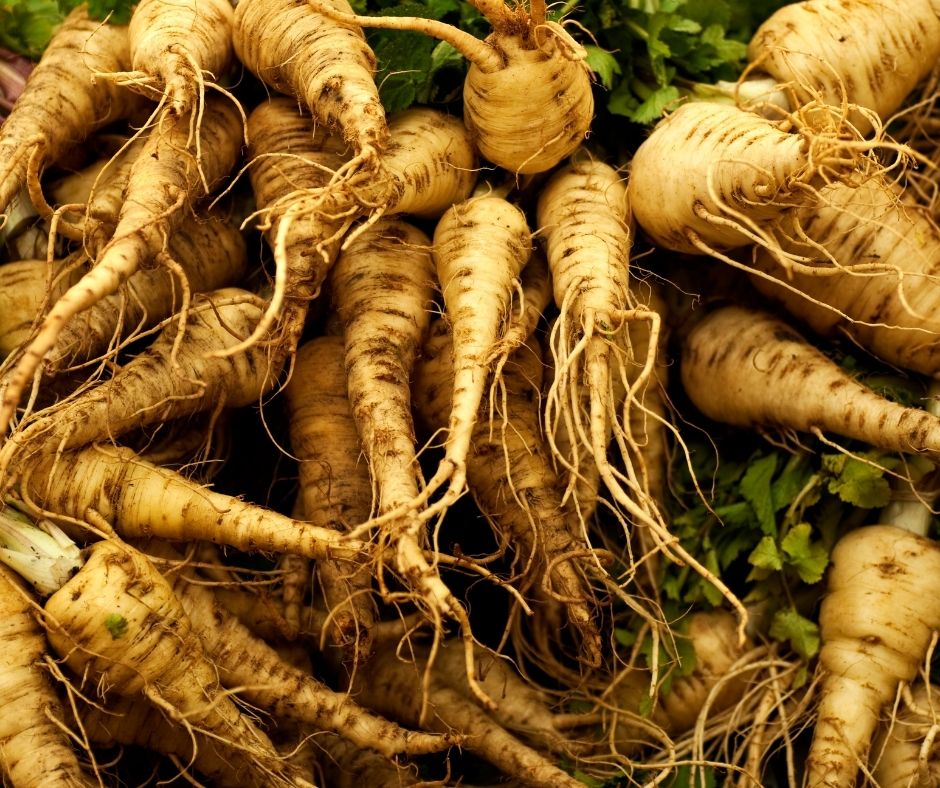
Seed Saving from Parsnips
Parsnips are insect pollinated and, like carrots, will cross with wild and other cultivated varieties. They can also cross with themselves.
They are biennial flowering in their second year. In mild areas they can over winter in the ground, protected from frost with a mulch. In colder areas, lift the crop at the end of the frost growing season.
At harvest time, twist off or cut the leaves 2 cm above growing point. Only the best roots should be selected and put aside for growing seeds. Store the parsnips in moist cool conditions, either in nets or sand. Discard damaged or rotting parsnips during storage. ) In the following spring plant out the stored roots so that the shoulders of the parsnips are level with the ground.
To prevent cross-pollination with other crops growing nearby, a distance of between 800 – 1600 metres should be maintained between the two crops. In more sheltered areas with hedges, trees and other barriers, a shorter distance of 800 meters can be used.
It is important to maintain the genetic diversity of the many different traits of parsnips. But a minimum of 20 plants for home grown situations is to be recommended.
When the shoots are growing and the first flowers appear, support the plants with 5ft stakes at each end of the bed and place strong canes at 6 ft intervals in the row. Then tie several rows of string along the outside of the crop to keep stems in and supported. Any plants which fail to grow well should be pulled out and discarded before flowering .
Parsnips produce large flower heads, called umbels. When the seeds are ready to harvest, they will be bronze-brown in colour. Use secateurs to cut umbels with about 3-4 inch of stem and place into paper bags. The harvested crop should be left to dry so that the seeds can be shaken from the umbels.
Store the seeds in a dry and cool place, to prevent the seed from drawing in moisture. Parsnip seeds do not store well and generally won’t keep for longer than 2 years.
